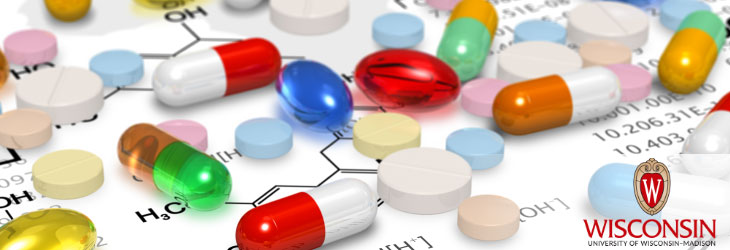Therapeutics & Vaccines

Stable Collagen Mimics
WARF: P06406US
Inventors: Ronald Raines, Matthew Shoulders, Jonathan Hodges
The Wisconsin Alumni Research Foundation (WARF) is seeking commercial partners interested in developing several new collagen mimics that use steric, rather than stereoelectronic, effects to achieve increased stability.
Overview
Collagen, the most abundant protein in vertebrates, provides structure for tissues and plays a key role in wound healing. In connective tissue, individual collagen molecules are wound together in tight triple helices that are further organized into strong fibrils. The collagen polypeptide chains are composed of approximately 300 repeats of the sequence Xaa-Yaa-Gly, where Xaa is often proline (Pro), Yaa is often hydroxyproline (Hyp) and the third residue is always glycine (Gly). Stereoelectronic effects cause the rings in the Xaa and Yaa positions to have complementary puckers, enhancing the stability of collagen.
The Invention
UW-Madison researchers have developed several new collagen mimics that use steric, rather than stereoelectronic, effects to achieve increased stability. The collagen mimics consist of a tripeptide unit with the formula (Xaa-Yaa-Gly)n, where either Xaa or Yaa is a bulky, non-electron withdrawing, 4-substituted proline derivative that contains an alkyl or thiol group, and n is a positive integer of at least 3.
Replacing a proline derivative at the Xaa or Yaa position results in steric effects that increase the stability of the helix. Specifically, three collagen variants that are more stable than native collagen are (Pro-Mep-Gly)7, (mep-Pro-Gly)7 and (mep-Mep-Gly)7, where Mep is (2S,4S)-4-methylproline and mep is (2S,4R)-4-methylproline. In addition, a fluoroproline may be substituted at the Xaa or Yaa position to further increase the strength and stability of the collagen.
Replacing a proline derivative at the Xaa or Yaa position results in steric effects that increase the stability of the helix. Specifically, three collagen variants that are more stable than native collagen are (Pro-Mep-Gly)7, (mep-Pro-Gly)7 and (mep-Mep-Gly)7, where Mep is (2S,4S)-4-methylproline and mep is (2S,4R)-4-methylproline. In addition, a fluoroproline may be substituted at the Xaa or Yaa position to further increase the strength and stability of the collagen.
Applications
- Treatment of diseases associated with abnormal collagen, including arthritis, osteoporosis and osteogenesis imperfecta
- Wound healing
- Artificial skin
- Tissue welding
- A substitute for collagen in other applications requiring high strength
Key Benefits
- Forms a stronger and more stable triple helix than native collagen
- The methyl group can be modified with almost any functional group, enabling the design of a hyperstable triple helix that displays useful functional groups for applications in biomaterials science and nanotechnology.
Additional Information
Related Technologies
- See WARF reference numbers P97135US and P03226US for other collagen mimics.
- P97135US
- P03226US
Related Intellectual Property
For current licensing status, please contact Rafael Diaz at [javascript protected email address] or 608-960-9847